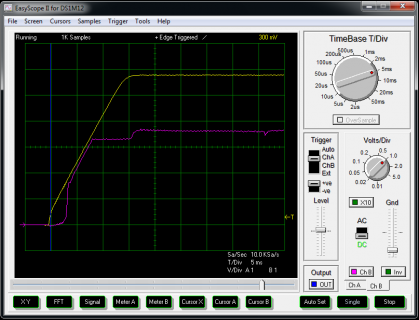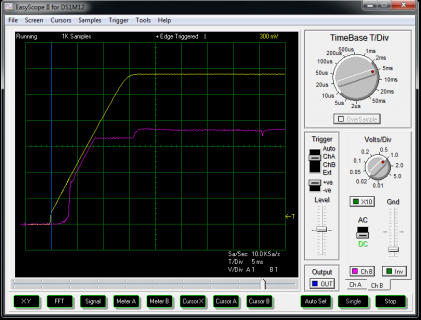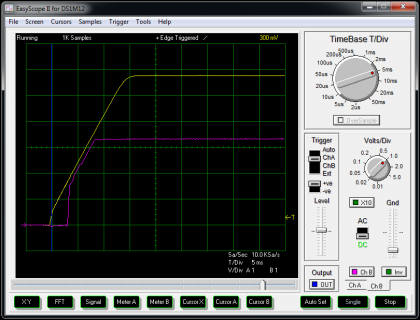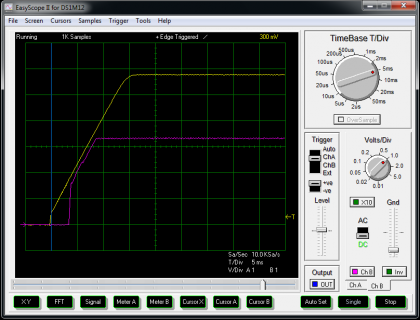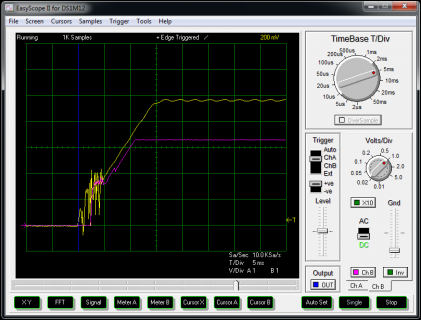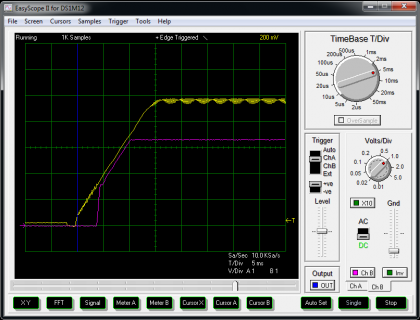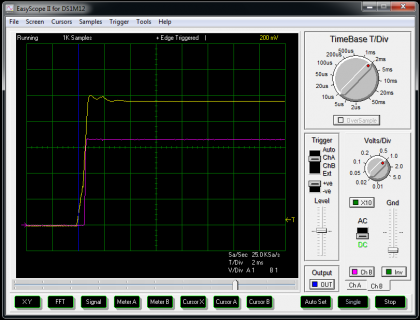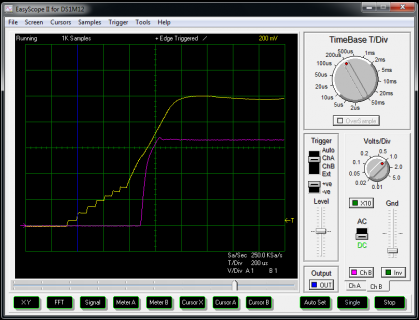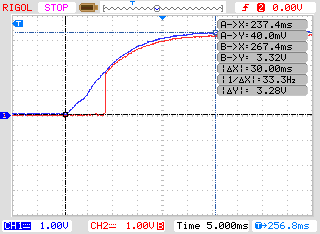Paul, I think the isolation converter is fine and will check that some time down the road with one I can connect directly, it provides a 5 V output. That was not possible this time, I had to use one with a 12 VDC output for other components. BTW the rise time for the isolation converter is a maximum of 3.5 msec. The one I am currently using is available at Digikey and likely other places. The part number is JCA1012S12, the data sheet is attached.
View attachment XP-Power_SF_JCA10.pdf
The buck converter is an el cheapo from China via Ebay. I have one more available and more to come. I can put one in an envelope for you. The specs are:
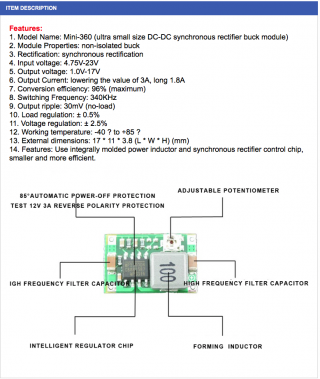
I think what is happening at the 1 to 2 V level is that the two converters are fighting each other during start-up control. This can possibly be overcome with an extra capacitor, which I used before but then the rise time will be even slower and the system does not start up. Without that 1000 uF capacitor now, it does start up every time (only tried 5 to 10 times or so) with a short delay. If I get time later today, I will solder that capacitor or a 330 uF one back in and see what happens.
View attachment XP-Power_SF_JCA10.pdf
The buck converter is an el cheapo from China via Ebay. I have one more available and more to come. I can put one in an envelope for you. The specs are:

I think what is happening at the 1 to 2 V level is that the two converters are fighting each other during start-up control. This can possibly be overcome with an extra capacitor, which I used before but then the rise time will be even slower and the system does not start up. Without that 1000 uF capacitor now, it does start up every time (only tried 5 to 10 times or so) with a short delay. If I get time later today, I will solder that capacitor or a 330 uF one back in and see what happens.


